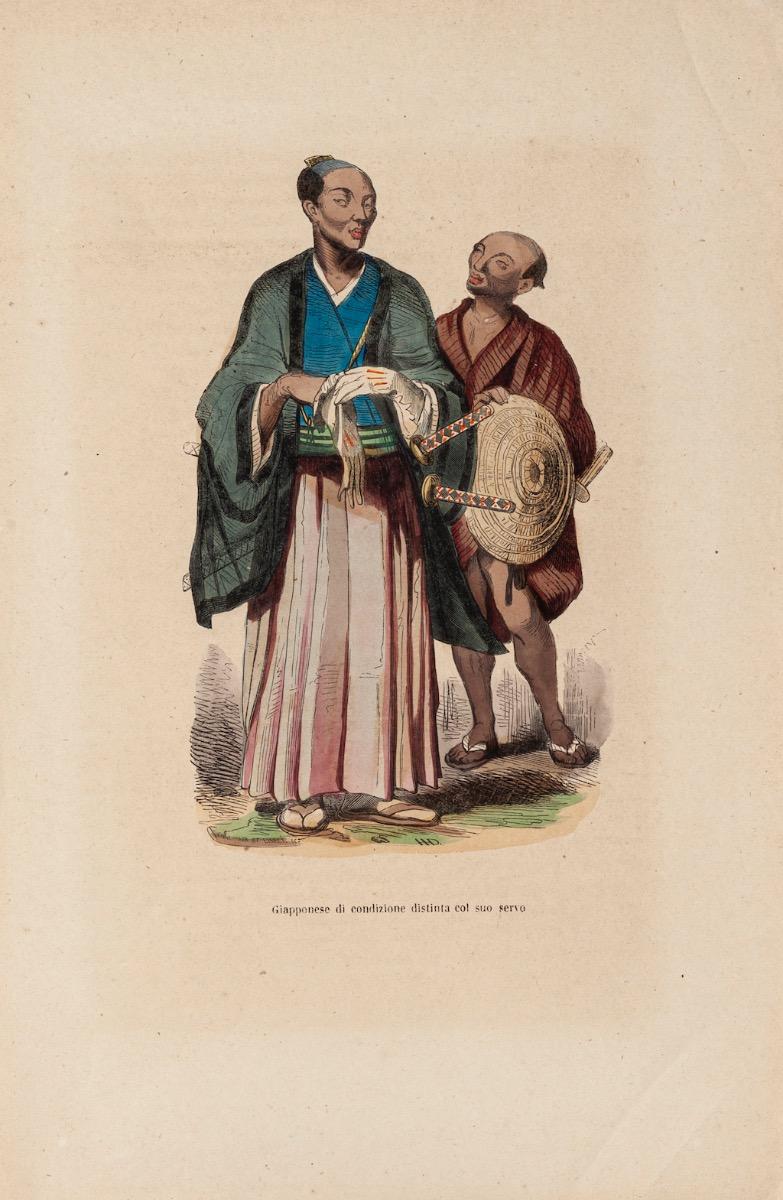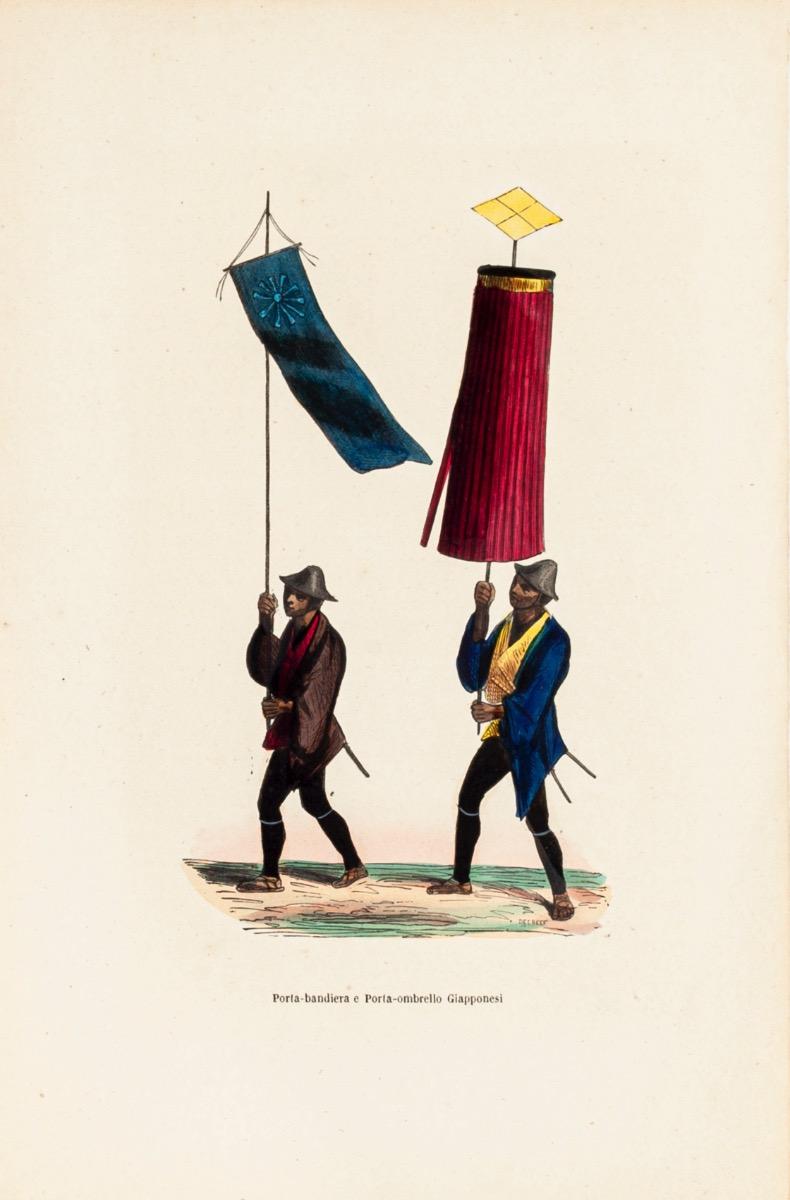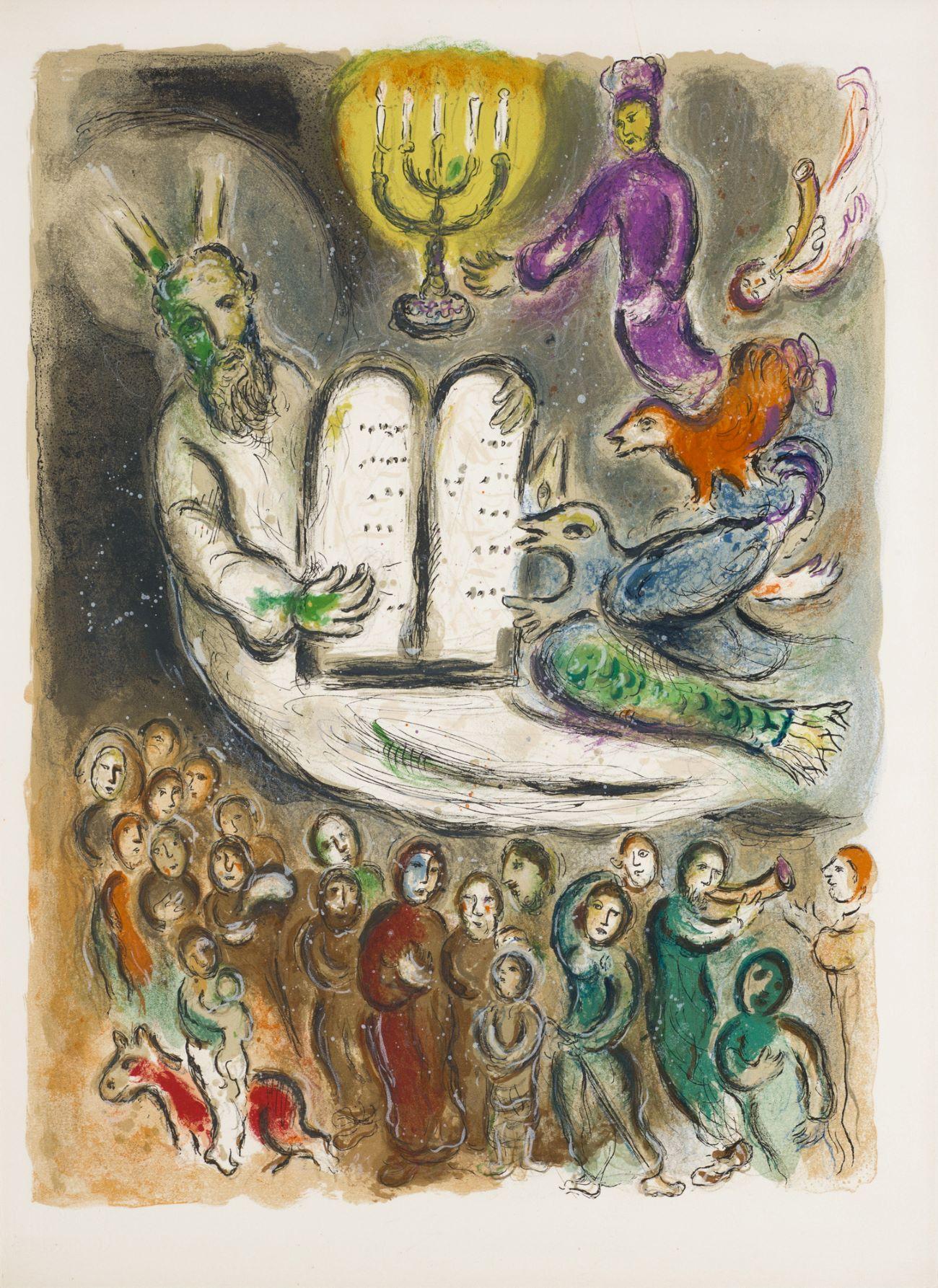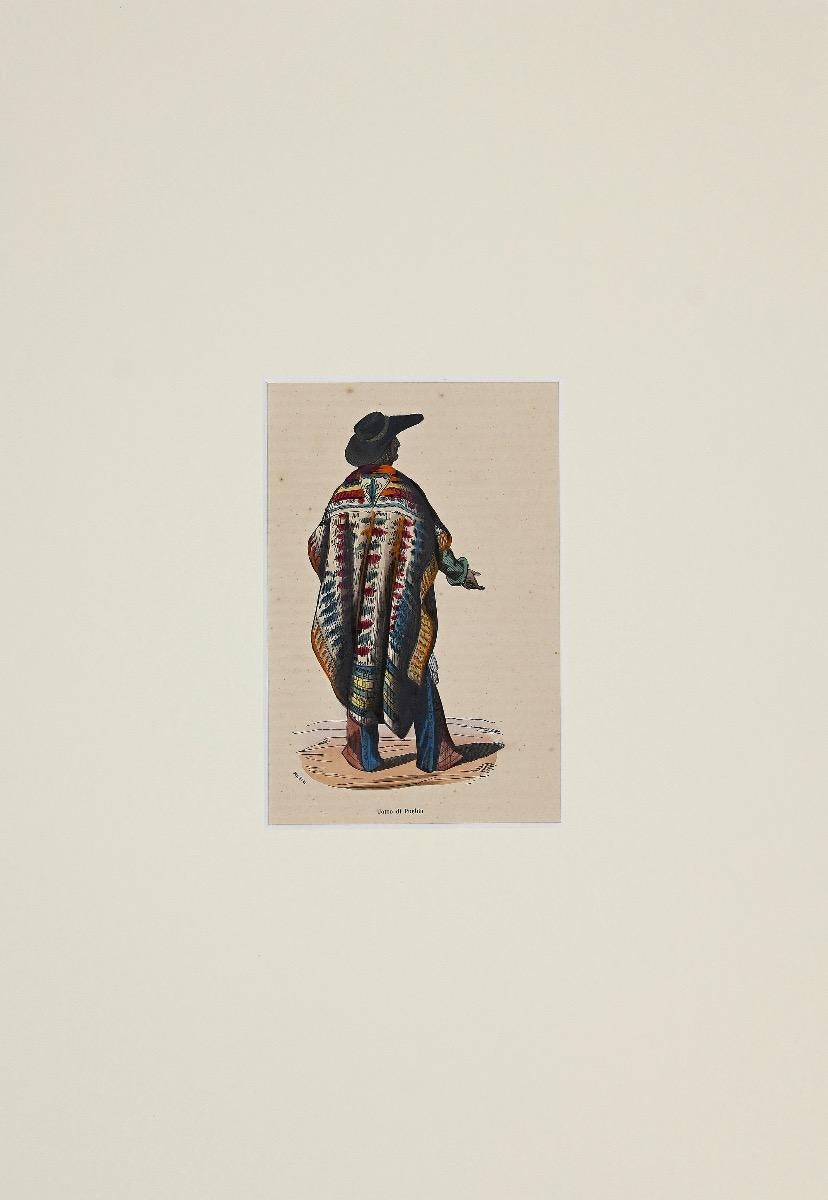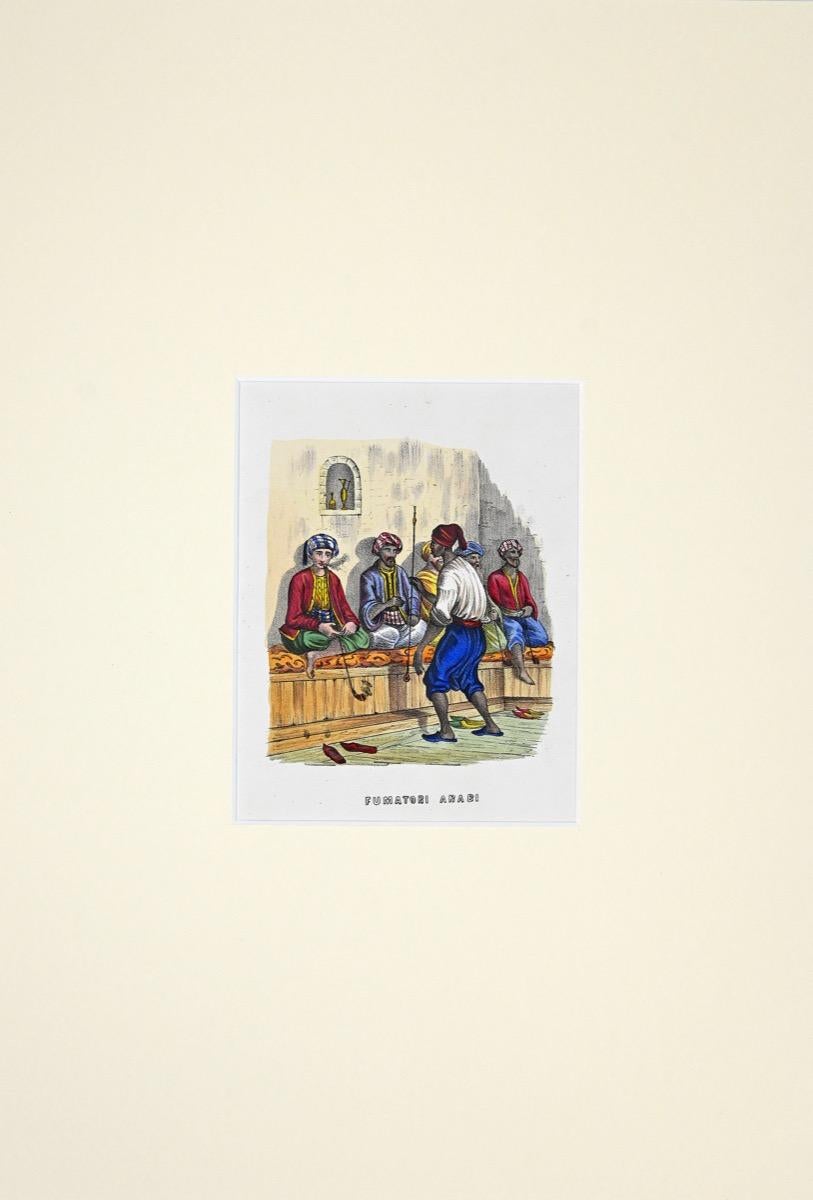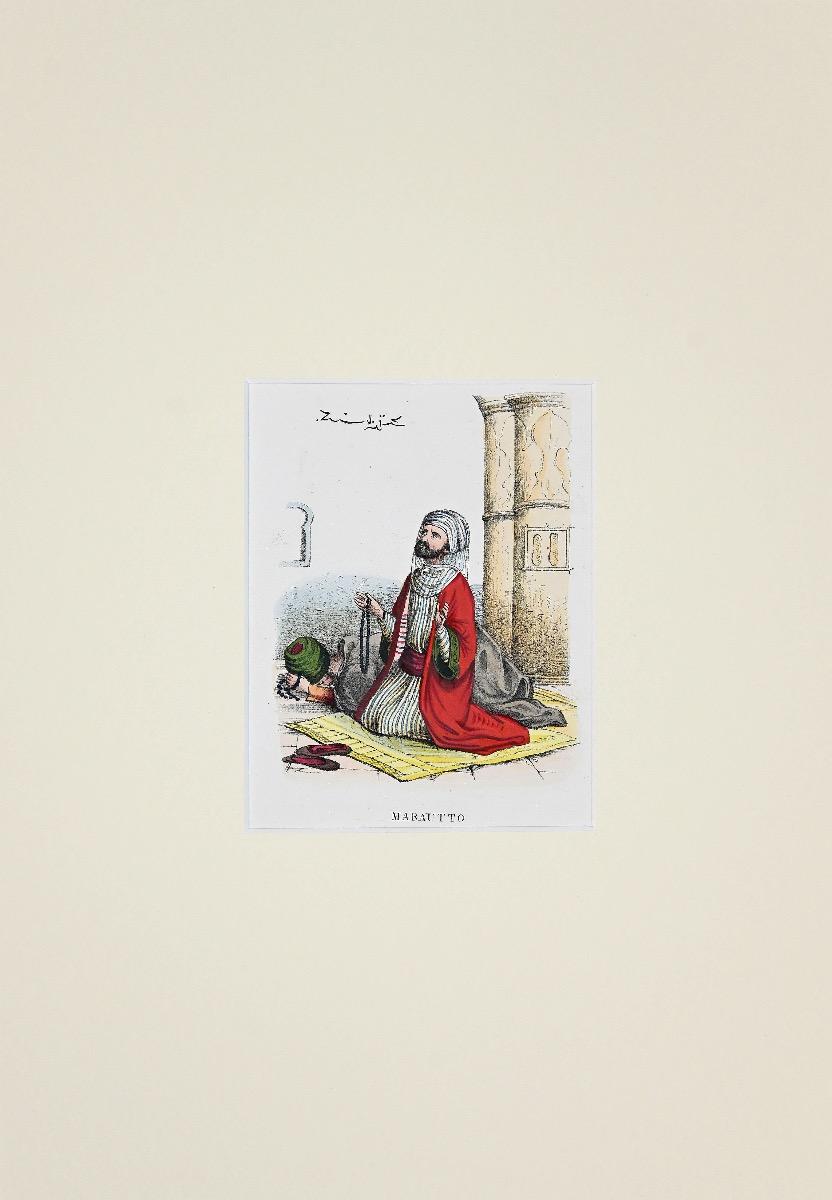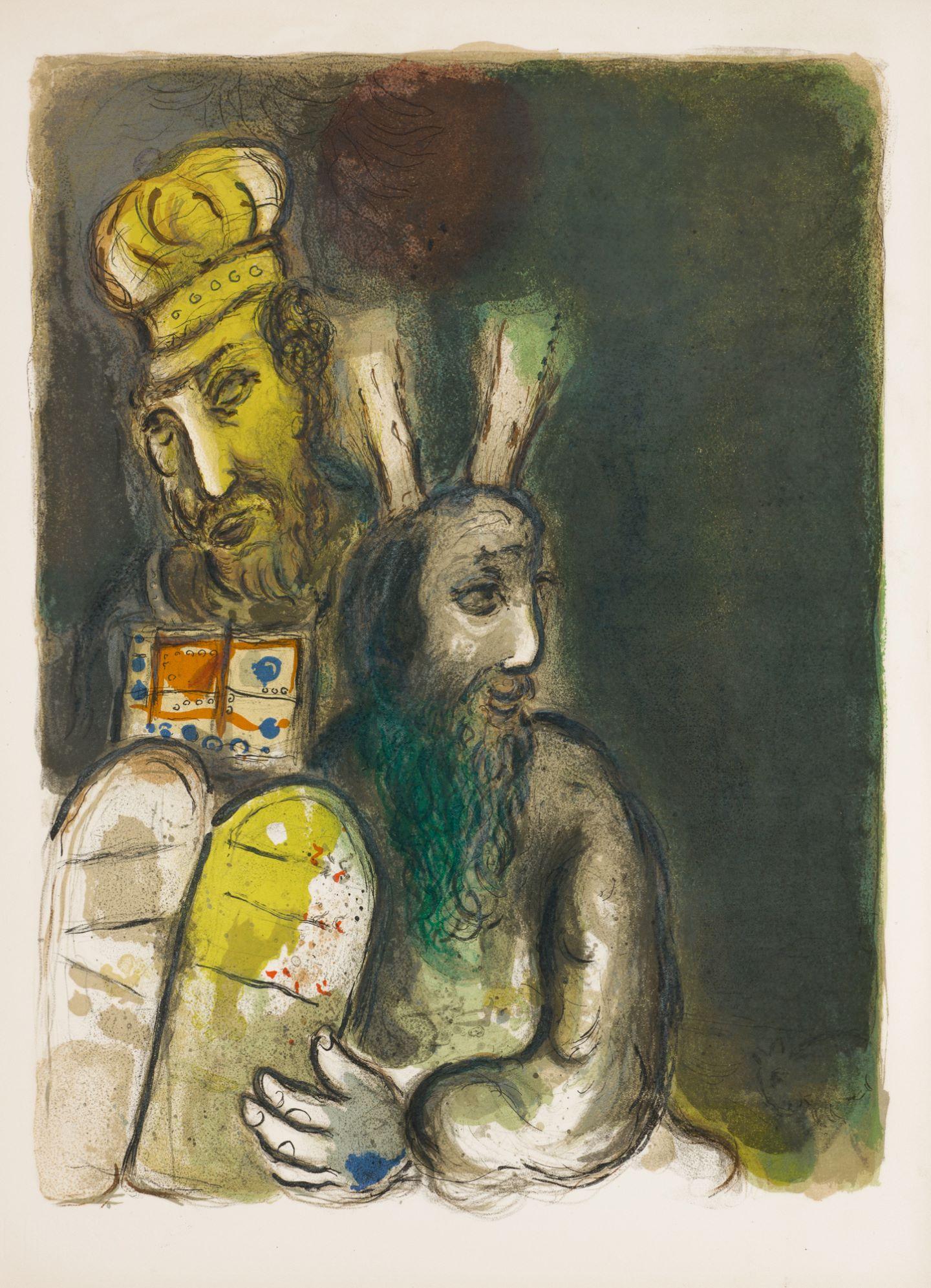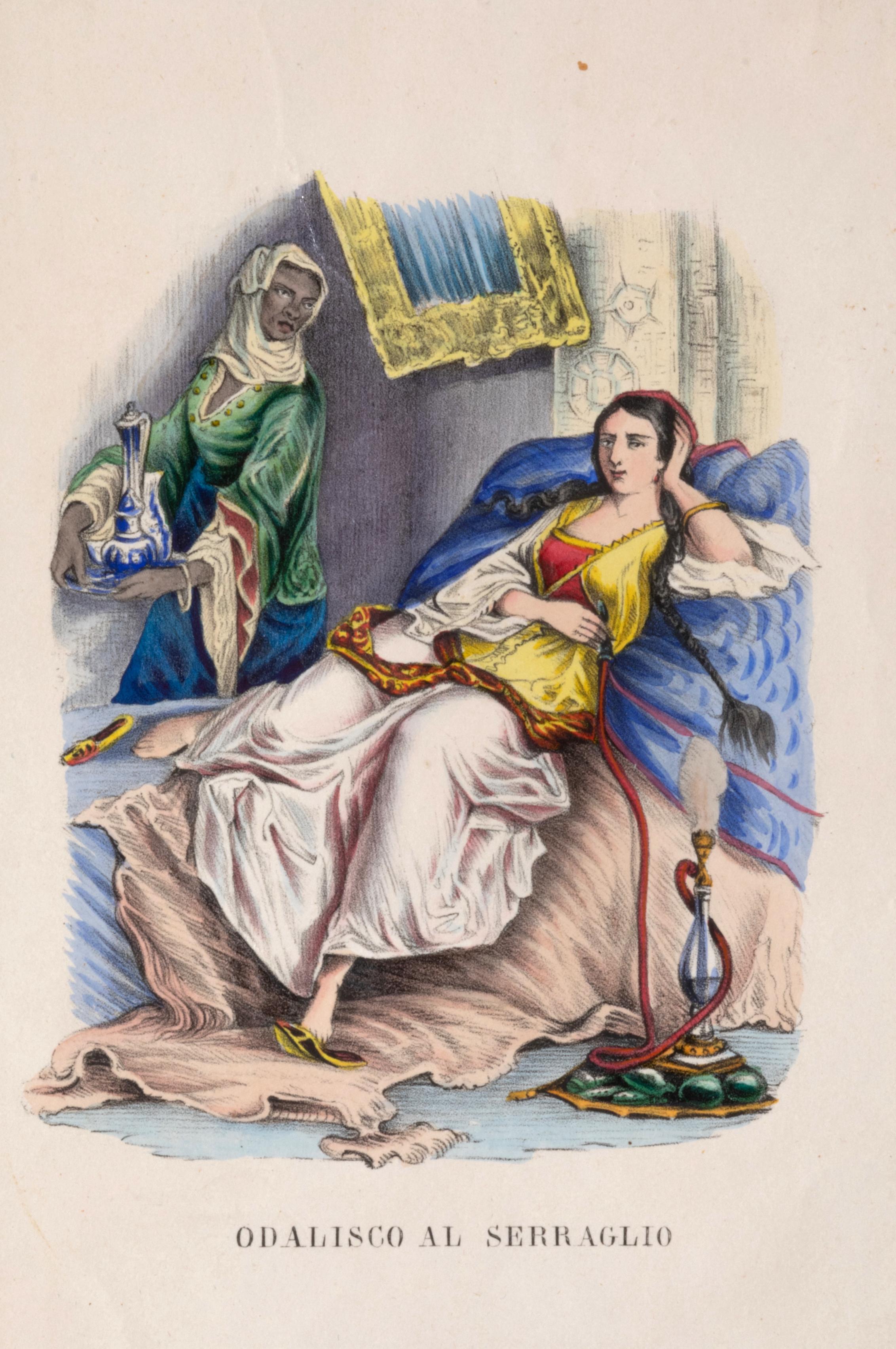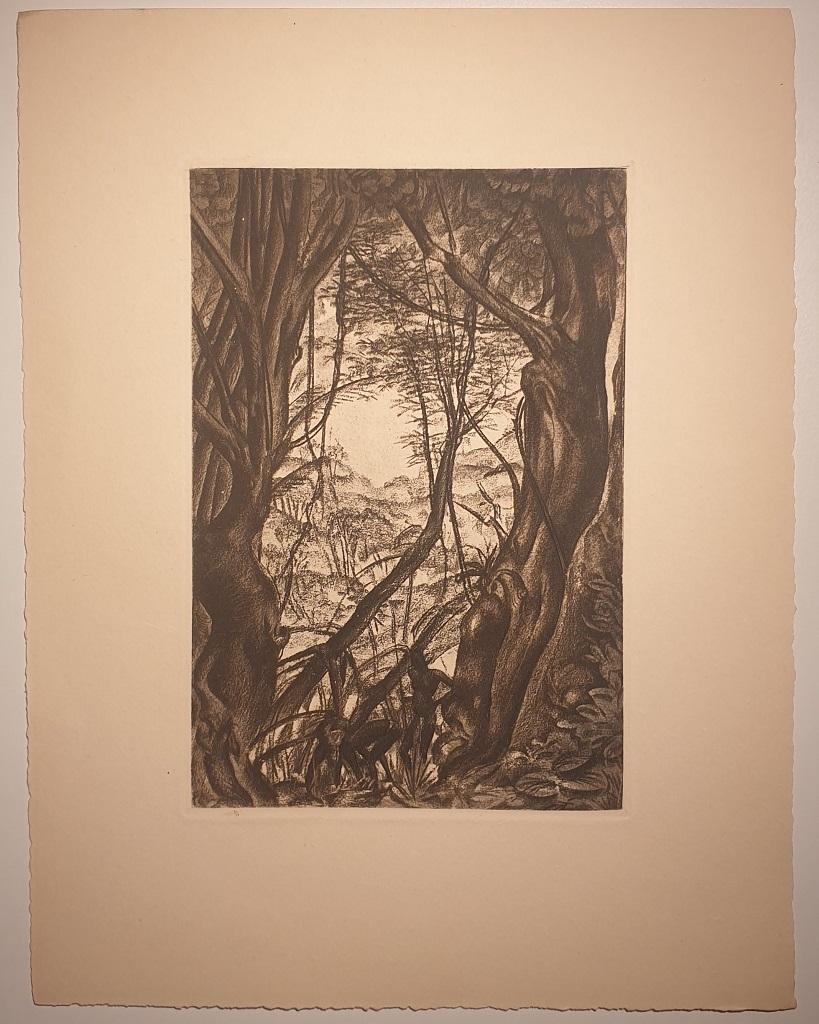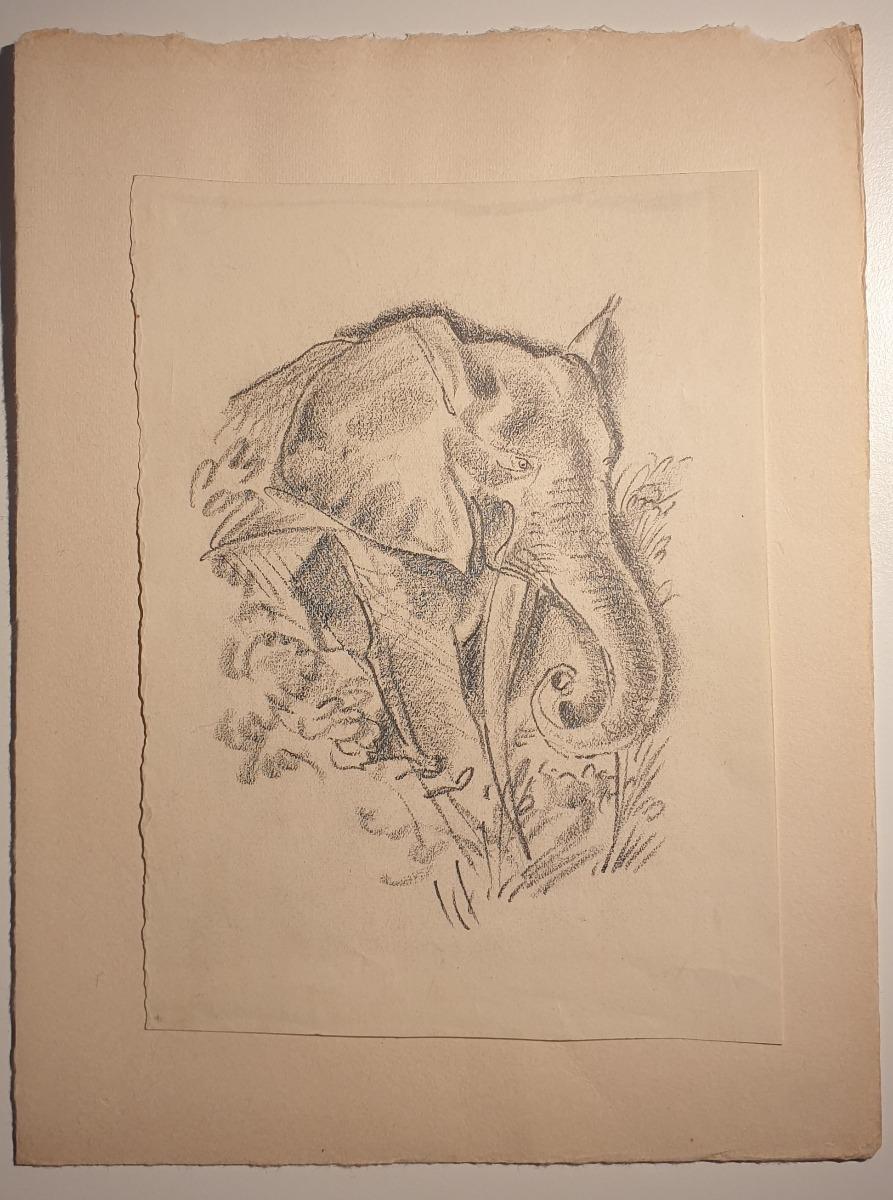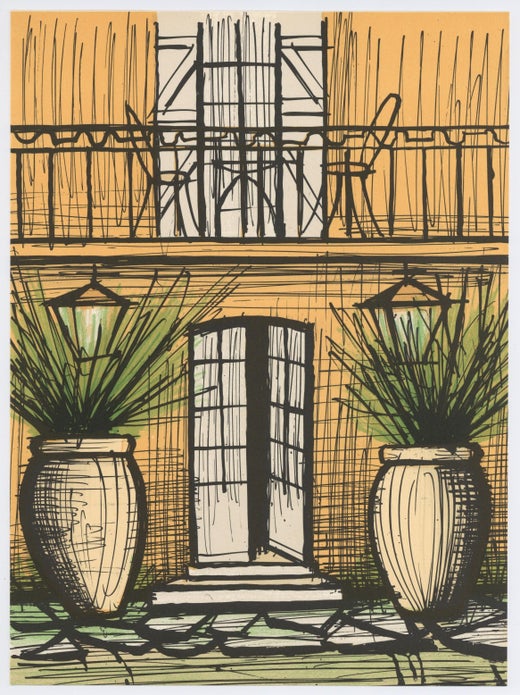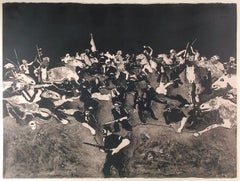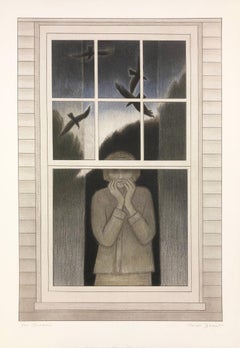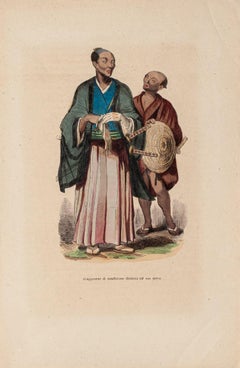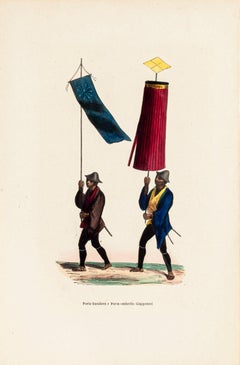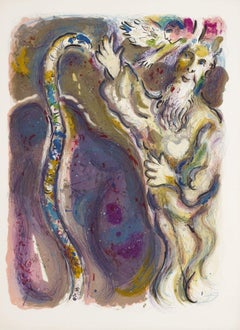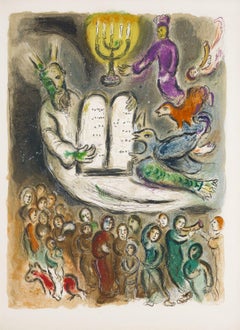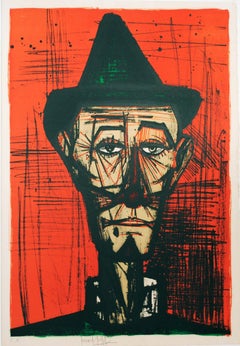
Portrait of a Clown (Un Clown)
View Similar Items
Want more images or videos?
Request additional images or videos from the seller
1 of 7
Bernard BuffetPortrait of a Clown (Un Clown)1968
1968
About the Item
- Creator:Bernard Buffet (1928 - 1999, French)
- Creation Year:1968
- Dimensions:Height: 34 in (86.36 cm)Width: 25 in (63.5 cm)Depth: 1 in (2.54 cm)
- Medium:
- Movement & Style:
- Period:
- Condition:
- Gallery Location:Missouri, MO
- Reference Number:1stDibs: LU74734511031
Bernard Buffet
Bernard Buffet was born on July 10, 1928, in Paris. He was a French painter of Expressionism and a member of the anti-abstract art group L'homme Témoin. He studied art at the École Nationale supérieure des Beaux-Arts and worked in the studio of the painter Eugène Narbonne. Buffet died on October 4, 1999, in Tourtour, France.
Find a collection of original Bernard Buffet prints and other art on 1stDibs.
About the Seller
5.0
Vetted Professional Seller
Every seller passes strict standards for authenticity and reliability
Established in 1970
1stDibs seller since 2017
153 sales on 1stDibs
Typical response time: 17 hours
Authenticity Guarantee
In the unlikely event there’s an issue with an item’s authenticity, contact us within 1 year for a full refund. DetailsMoney-Back Guarantee
If your item is not as described, is damaged in transit, or does not arrive, contact us within 7 days for a full refund. Details24-Hour Cancellation
You have a 24-hour grace period in which to reconsider your purchase, with no questions asked.Vetted Professional Sellers
Our world-class sellers must adhere to strict standards for service and quality, maintaining the integrity of our listings.Price-Match Guarantee
If you find that a seller listed the same item for a lower price elsewhere, we’ll match it.Trusted Global Delivery
Our best-in-class carrier network provides specialized shipping options worldwide, including custom delivery.More From This Seller
View AllCuster's Last Fight
By Fritz Scholder
Located in Missouri, MO
Fritz Scholder (1937-2005)
"Custer's Last Fight"
Lithograph
Ed. 54/75
Signed and Numbered
Site Size: approx 22 x 30 inches
Framed Size: approx. 35 x 41.5 inches
Born in Breckenridge, Minnesota, Fritz Scholder became a prominent Indian portrait, figure, and genre painter in Arizona. His father was part Indian, and Fritz Scholder chose to focus his art work on this part of his lineage and to express both an appreciation and disdain for Indian customs, traditions, and daily existence.
He studied at the University of Kansas, Wisconsin State University, and with Wayne Thiebaud at Sacramento College in California. He earned an Master of Fine Arts Degree from the University of Arizona. A long-time resident of Scottsdale, Arizona, he has filled a number of artist-in-residence positions including Dartmouth College and the Oklahoma Summer Arts Institute.
In his work, he frequently showed the harsh, realistic side of Indians' lives and deaths including the affects of alcohol and other dissipations, but some of his depictions are humorous such as Indians on horseback carrying umbrellas. His brush-work is generally swift, and the tone often sombre and surreal. A major influence on his work was the contemporary British artist, Francis Bacon, from whom Scholder adapted ironic distortions into his canvases.
In Scottsdale, he lived in an adobe-walled oasis of palm trees and oleander, amid skulls and skeletons. In the garden, several of Mr. Scholder's sculptures feature skull-like heads. In the library, an 18th-century skull engraved with witchcraft symbols shared shelf space with books printed before 1500. And the porch had been converted into a skull room, complete with Mexican Day of the Dead...
Category
1970s American Modern Figurative Prints
Materials
Paper, Lithograph
Price Upon Request
Bataille de Fleurs (Carnaval of Flowers) from Nice and the Côte d’Azur
By Marc Chagall
Located in Missouri, MO
After Marc Chagall (1887 - 1985)
By Charles Sorlier (French, 1921-1990)
"Bataille de Fleurs (Carnaval of Flowers)" (from Nice and the Côte d’Azur), 1967
Reference: CS 33
Color Lithograph
Image Size: 24 7/16 in x 18 in (62 cm x 45.8 cm)
Sheet Size: 29 9/16 in x 20 11/16 in (75 x 52.5 cm)
Framed Size: approx. 34 x 27 inches
Edition: Numbered 1 of 150 in pencil in the lower left margin and printed on Arches wove paper (aside from an edition of 75 signed and numbered in Roman numerals and 10 artist's proofs).
Signature: This work is hand signed by Marc Chagall (Vitebsk, 1887 - Saint-Paul, 1985) in pencil in the lower right margin.
Marc Chagall was a man of keen intelligence, a shrewd observer of the contemporary scene, with a great sympathy for human suffering. He was born on July 7, 1887 in Vitebsk, Russia; his original name was Moishe Shagal (Segal), but when he became a foremost member of the Ecole de Paris, he adopted French citizenship and the French spelling of his name. Vitebsk was a good-sized Russian town of over 60,000, not a shtetl. His father supported a wife and eight children as a worker in a herring-pickling plant.
Sheltered by the Jewish commandment against graven images, the young Chagall never saw so much as a drawing until, one day, he watched a schoolmate copying a magazine illustration. He was ridiculed for his astonishment, but he began copying and improvising from magazines. Both Chagall's parents reluctantly agreed to let him study with Yehuda Pen, a Jewish artist in Vitebsk. Later, in 1906, they allowed their son to study in St. Petersburg, where he was exposed to Russian Iconography and folk art. At that time, Jews could leave the Pale only for business and employment and were required to carry a permit. Chagall, who was in St. Petersburg without a permit, was imprisoned briefly.
His first wife, Bella Rosenfeld, was a product of a rich cultivated and intellectual group of Jews in Vitebsk. Chagall was made commissar for the arts for the area, charged with directing its cultural life and establishing an art school. Russian folklore, peasant life and landscapes persisted in his work all his life. In 1910 a rich patron, a lawyer named Vinaver, staked him to a crucial trip to Paris, where young artists were revolutionizing art. He also sent him a handsome allowance of 125 francs (in those days about $24) each month. Chagall rejected cubism, fauvism and futurism, but remained in Paris. He found a studio near Montparnasse in a famous twelve-sided wooden structure divided into wedge-shaped rooms. Chaim Soutine, a fellow Russian Jew...
Category
1960s Modern Figurative Prints
Materials
Lithograph
Le Christ a l'Horloge, Paris
By Marc Chagall
Located in Missouri, MO
Marc Chagall
"Le Christ a l'Horloge, Paris" (Christ in the Clock) 1957 (M. 196)
Color Lithograph on Arches Wove Paper
Signed in Pencil "Marc Chagall" Lower Right
Initialed "H.C." (Hors Commerce) Lower Left, aside from numbered edition of 90
*Floated in Gold Frame with Linen Matting, UV Plexiglass
Sheet Size: 18 3/4 x 14 3/4 inches (47.5 cm x 38 cm)
Image Size: 9 3/4 x 8 1/2 inches
Framed Size: 28.5 x 24.25 inches
Marc Chagall was a man of keen intelligence, a shrewd observer of the contemporary scene, with a great sympathy for human suffering. He was born on July 7, 1887 in Vitebsk, Russia; his original name was Moishe Shagal (Segal), but when he became a foremost member of the Ecole de Paris, he adopted French citizenship and the French spelling of his name. Vitebsk was a good-sized Russian town of over 60,000, not a shtetl. His father supported a wife and eight children as a worker in a herring-pickling plant.
Sheltered by the Jewish commandment against graven images, the young Chagall never saw so much as a drawing until, one day, he watched a schoolmate copying a magazine illustration. He was ridiculed for his astonishment, but he began copying and improvising from magazines. Both Chagall's parents reluctantly agreed to let him study with Yehuda Pen, a Jewish artist in Vitebsk. Later, in 1906, they allowed their son to study in St. Petersburg, where he was exposed to Russian Iconography and folk art. At that time, Jews could leave the Pale only for business and employment and were required to carry a permit. Chagall, who was in St. Petersburg without a permit, was imprisoned briefly.
His first wife, Bella Rosenfeld, was a product of a rich cultivated and intellectual group of Jews in Vitebsk. Chagall was made commissar for the arts for the area, charged with directing its cultural life and establishing an art school. Russian folklore, peasant life and landscapes persisted in his work all his life. In 1910 a rich patron, a lawyer named Vinaver, staked him to a crucial trip to Paris, where young artists were revolutionizing art. He also sent him a handsome allowance of 125 francs (in those days about $24) each month. Chagall rejected cubism, fauvism and futurism, but remained in Paris. He found a studio near Montparnasse in a famous twelve-sided wooden structure divided into wedge-shaped rooms. Chaim Soutine, a fellow Russian Jew, and Modigliani lived on the same floor. To Chagall's astonishment, he found himself heralded as one of the fathers of surrealism. In 1923, a delegation of Max Ernst, Paul Eluard and Gala (later Salvador Dali's wife) actually knelt before Chagall, begging him to join their ranks. He refused.
To understand Chagall's work, it is necessary to know that he was born a Hasidic Jew, heir to mysticism and a world of the spirit, steeped in Jewish lore and reared in the Yiddish language. The Hasidim had a special feeling for animals, which they tried not to overburden. In the mysterious world of Kabbala and fantastic ancient legends of Chagall's youth, the imaginary was as important as the real. His extraordinary use of color also grew out of his dream world; he did not use color realistically, but for emotional effect and to serve the needs of his design. Most of his favorite themes, though superficially light and trivial, mask dark and somber thoughts. The circus he views as a mirror of life; the crucifixion as a tragic theme, used as a parallel to the historic Jewish condition, but he is perhaps best known for the rapturous lovers he painted all his life. His love of music is a theme that runs through his paintings.
After a brief period in Berlin, Chagall, Bella and their young daughter, Ida, moved to Paris and in 1937 they assumed French citizenship. When France fell, Chagall accepted an invitation from the Museum of Modern Art to immigrate to the United States. He was arrested and imprisoned in Marseilles for a short time, but was still able to immigrate with his family. The Nazi onslaught caught Chagall in Vichy, France, preoccupied with his work. He was loath to leave; his friend Varian Fry rescued him from a police roundup of Jews in Marseille, and packed him, his family and 3500 lbs. of his art works on board a transatlantic ship. The day before he arrived in New York City, June 23, 1941, the Nazis attacked Russia. The United States provided a wartime haven and a climate of liberty for Chagall. In America he spent the war years designing large backdrops for the Ballet.
Bella died suddenly in the United States of a viral infection in September 1944 while summering in upstate New York. He rushed her to a hospital in the Adirondacks, where, hampered by his fragmentary English, they were turned away with the excuse that the hour was too late. The next day she died.
He waited for three years after the war before returning to France. With him went a slender married English girl, Virginia Haggard MacNeil; Chagall fell in love with her and they had a son, David. After seven years she ran off with an indigent photographer. It was an immense blow to Chagall's ego, but soon after, he met Valentine Brodsky, a Russian divorcee designing millinery in London (he called her Fava). She cared for him during the days of his immense fame and glory. They returned to France, to a home and studio in rustic Vence. Chagall loved the country and every day walked through the orchards, terraces, etc. before he went to work.
Chagall died on March 28, 1985 in the south of France. His heirs negotiated an arrangement with the French state allowing them to pay most of their inheritance taxes in works of art. The heirs owed about $30 million to the French government; roughly $23 million of that amount was deemed payable in artworks. Chagall's daughter, Ida and his widow approved the arrangement.
Written and submitted by Jean Ershler Schatz, artist and researcher from Laguna Woods, California.
Sources:
Hannah Grad Goodman in Homage to Chagall in Hadassah Magazine, June 1985
Jack Kroll in Newsweek, April 8, 1985
Andrea Jolles in National Jewish Monthly Magazine, May 1985
Michael Gibson...
Category
1950s Modern Figurative Prints
Materials
Lithograph
Price Upon Request
The Dream
By Will Barnet
Located in Missouri, MO
Will Barnet
"The Dream" 2002
Color Lithograph on Somerset Velvet White Paper
Signed and Titled
Ed. 250
Will Barnet, Visionary Artist, Dies at 101
By KEN JOH...
Category
Early 2000s Modern Figurative Prints
Materials
Lithograph
Price Upon Request
After the Painting of Secrets (Sister's Diary)
By After Norman Rockwell
Located in Missouri, MO
*This color lithograph was done as a lithographic reproduction of Rockwell's original painting that was used for the cover of a 1942 Saturday Evening Post.
After Norman Rockwell...
Category
Late 20th Century American Modern Figurative Prints
Materials
Lithograph
Bareback Act, Old Hippodrome
By Gifford Beal
Located in Missouri, MO
Bareback Act, Old Hippodrome
By Gifford Beal (1879-1956)
Signed Lower Right
Unframed: 6.5" x 9.5"
Framed: 17.5" x 20"
Gifford Beal, painter, etcher, muralist, and teacher, was born in New York City in 1879. The son of landscape painter William Reynolds Beal, Gifford Beal began studying at William Merritt Chase's Shinnecock School of Art (the first established school of plein air painting in America) at the age of thirteen, when he accompanied his older brother, Reynolds, to summer classes. He remained a pupil of Chase's for ten years also studying with him in New York City at the artist's private studio in the Tenth Street Studio Building. Later at his father's behest, he attended Princeton University from 1896 to 1900 while still continuing his lessons with Chase. Upon graduation from Princeton he took classes at the Art Students' League, studying with impressionist landscape painter Henry Ward Ranger and Boston academic painter Frank Vincent DuMond. He ended up as President of the Art Students League for fourteen years, "a distinction unsurpassed by any other artist."
His student days were spent entirely in this country. "Given the opportunity to visit Paris en route to England in 1908, he chose to avoid it" he stated, "I didn't trust myself with the delightful life in ParisIt all sounded so fascinating and easy and loose." His subjects were predominately American, and it has been said stylistically "his art is completely American." Gifford achieved early recognition in the New York Art World.
He became an associate member of the National Academy of Design in 1908 and was elected to full status of academician in 1914. He was known for garden parties, circuses, landscapes, streets, coasts, flowers and marines. This diversity in subject matter created "no typical or characteristic style to his work."
Beal's style was highly influenced by Chase and Childe Hassam, a long time friend of the Beal family who used to travel "about the countryside with Beal in a car sketching...
Category
20th Century American Modern Animal Prints
Materials
Lithograph
Price Upon Request
You May Also Like
Japanese Customs - Original Lithograph - 19th Century
Located in Roma, IT
Japanese Custom is an original Hand-colored lithograph on creamy paper realized by an anonymous artist in the 19th Century.
Signed on the plate on the lower. Titled in Italian on th...
Category
19th Century Modern Figurative Prints
Materials
Lithograph, Paper
Japanese Customs - Original Lithograph - 19th Century
Located in Roma, IT
Japanese Custom is an original Hand-colored lithograph on creamy paper realized by an anonymous artist in the 19th Century.
Signed on plate on the lower right. Titled in Italian on ...
Category
19th Century Modern Figurative Prints
Materials
Lithograph, Paper
"He cast the rodde on the ground…" (The Story of Exodus, M.448), 1966
By Marc Chagall
Located in Greenwich, CT
"Then the Lord sayde unto Aaron, "Goe meete Moses in the wildernesse." And he went and met him in the mount of God and kissed him.(M.449)" from Marc Chagall's "The Story of Exodus," ...
Category
20th Century Modern Prints and Multiples
Materials
Paper, Lithograph
"Moses then came and called for the Elders…" (The Story of Exodus, M.457), 1966
By Marc Chagall
Located in Greenwich, CT
Moses then came and called for the Elders of the people, and proposed unto them all these things, which the Lorde commanded him. (M.457)" from Marc Chagall's "The Story of Exodus," 1...
Category
20th Century Modern Prints and Multiples
Materials
Paper, Lithograph
Man from Puebla - Original Lithograph - 1849
Located in Roma, IT
Man from Puebla is an original hand-watercolored lithograph on ivory paper by Anonymous Artist of 19th Century, in 1849.
In excellent conditions: As good as new.
Not signed. Title...
Category
1840s Modern Figurative Prints
Materials
Lithograph, Paper
Arab Smokers - Original Lithograph - 1849
Located in Roma, IT
Arab Smokers is an original hand-watercolored lithograph on ivory paper by Anonymous Artist in 1849.
In excellent conditions: As good as new.
Not signed. Titled on the lower cente...
Category
1840s Modern Figurative Prints
Materials
Lithograph, Paper
